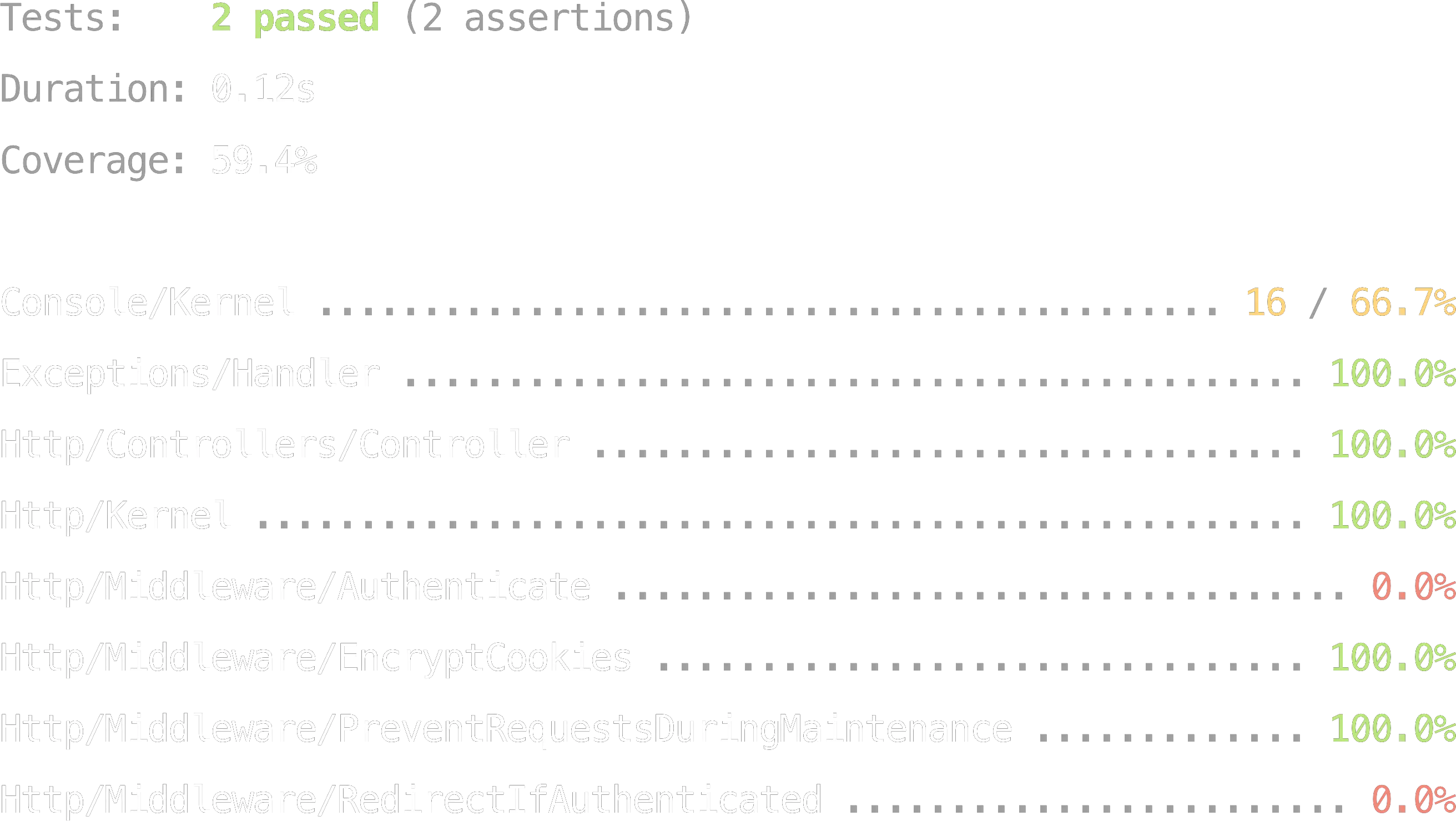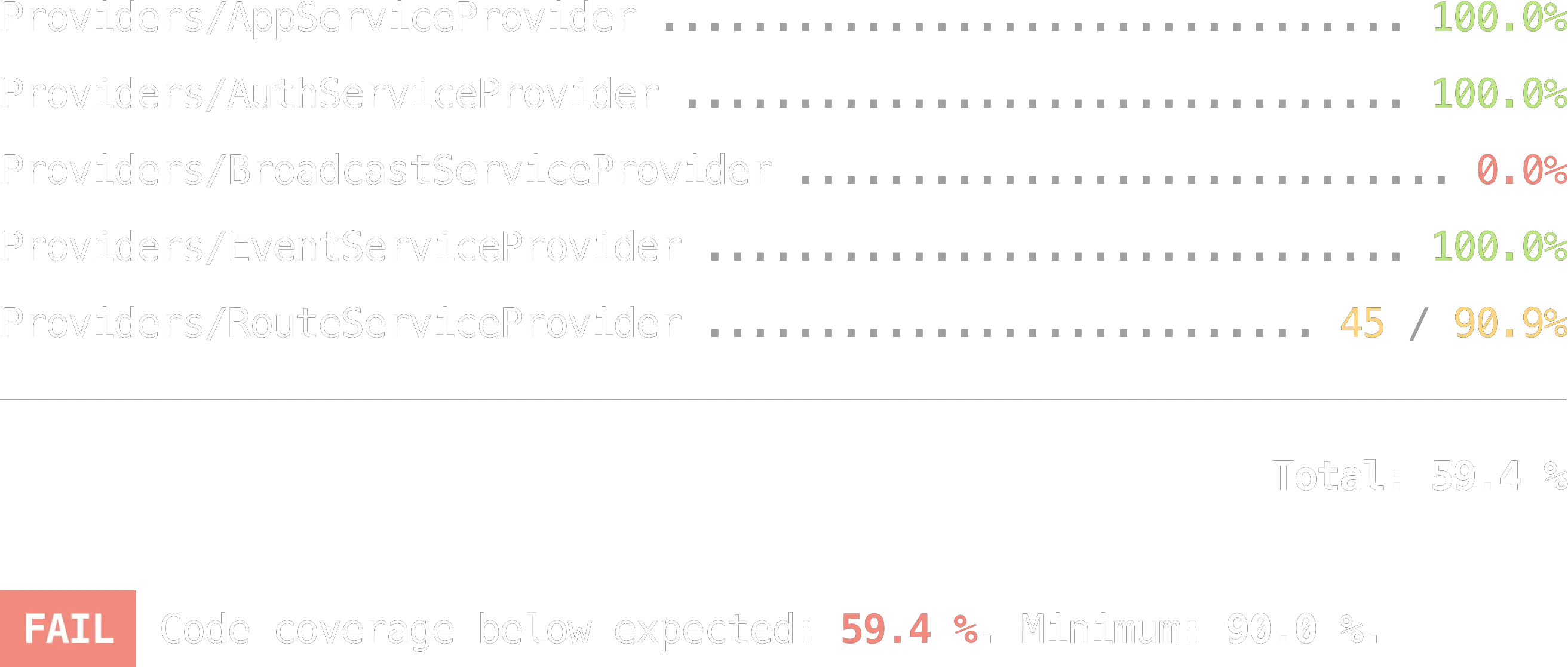Test Coverage
Requires XDebug 3.0+ or PCOV.
Test coverage (or code coverage) is a metric used to measure the percentage of code that is executed during testing. This can help developers identify parts of their code that may not be tested or that have low coverage, indicating a potential risk for bugs and other issues.
Typically, the essential configuration for gathering code coverage is already present in the phpunit.xml file provided by frameworks, or is generated by executing the ./vendor/bin/pest --init command. If code coverage configuration is not present in your phpunit.xml file, you can add your own configuration to specify the paths in your project that should receive code coverage reporting.
1...2<source>3 <include>4 <directory suffix=".php">./app</directory>5 </include>6</source>7...In addition to configuring your phpunit.xml file, you will also need to install XDebug 3.0+ or PCOV to generate a code coverage report. When utilizing XDebug, the XDEBUG_MODE environment variable must be configured as coverage.
Once you have configured your code coverage settings and installed a coverage driver, generating a code coverage report becomes effortless with the use of the --coverage option.
1./vendor/bin/pest --coverageBy utilizing the --coverage option, the test suite runs normally, but with the additional feature of displaying a list of project files and their corresponding coverage results.

If there are any uncovered lines in your current test suite, they will be highlighted in red and displayed using their respective line numbers. Multiple uncovered lines will be displayed with two dots (..) between them. For instance, if there is missing coverage between lines 52 and 60, you will see 52..60 instead of just 52 in red.
Minimum Threshold Enforcement
To ensure comprehensive testing and maintain code quality, it is crucial to set minimum threshold values for coverage results. In Pest, you can use the --coverage and --min or --exactly options to define the minimum threshold values for coverage results. If the specified thresholds are not met, Pest will report a failure.
1./vendor/bin/pest --coverage --min=90
Or, you can use the --exactly option to enforce that the coverage results match the specified value exactly.
1./vendor/bin/pest --coverage --exactly=99.3Ignoring Code
If there are certain sections of your application that cannot be tested and should be excluded from code coverage analysis, you can use @codeCoverageIgnoreStart and @codeCoverageIgnoreEnd comments in your source code to achieve this.
1// @codeCoverageIgnoreStart2function getUsers() {3 //4}5// @codeCoverageIgnoreEndDifferent Formats
Pest supports various code coverage report formats:
--coverage-clover <file>: Save the code coverage report in Clover XML format to a specified file.--coverage-cobertura <file>: Save the code coverage report in Cobertura XML format to a specified file.--coverage-crap4j <file>: Save the code coverage report in Crap4J XML format to a specified file.--coverage-html <dir>: Save the code coverage report in HTML format to a specified directory.--coverage-php <file>: Serialize the code coverage data and save it to a specified file.--coverage-text <file>: Save the code coverage report in text format to a specified file. (Default: php://stdout)--coverage-xml <dir>: Save the code coverage report in XML format to a specified directory.
In this chapter, we discussed test coverage and its ability to aid in determining the percentage of your application that is actually tested. In the following chapter, we will dive into Pest's Type Coverage Plugin: Type Coverage